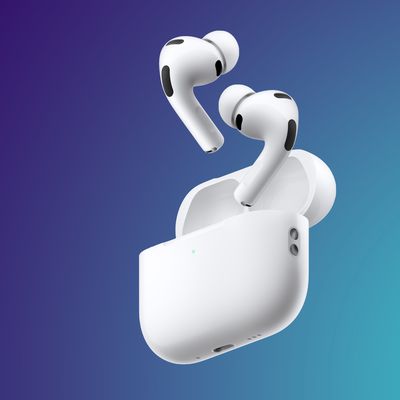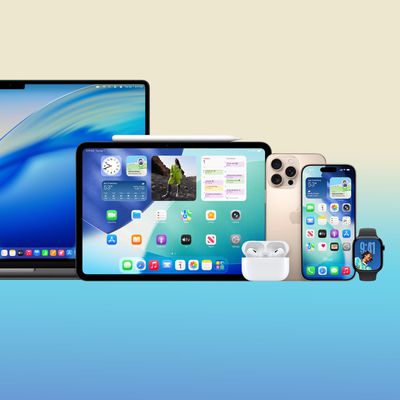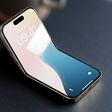O2 Privacy Flaw Sends Users' Mobile Numbers to Visited Websites
 As noted by think broadband, a privacy flaw in the way UK carrier O2 handles web traffic on mobile devices has resulted in users' mobile numbers being sent to any website visited from the device as part of the headers in the HTTP requests. While O2 is apparently still investigating the situation, it appears to have the potential for significant privacy-related issues.
As noted by think broadband, a privacy flaw in the way UK carrier O2 handles web traffic on mobile devices has resulted in users' mobile numbers being sent to any website visited from the device as part of the headers in the HTTP requests. While O2 is apparently still investigating the situation, it appears to have the potential for significant privacy-related issues.
If you're reading this news article using your O2 mobile phone, you'll be pleased to know that O2 have already sent us your mobile phone number within the HTTP headers which normally contain information about how content can be displayed on your device. These headers are not normally seen by users, and usually not logged by most websites, but the flaw allows malicious sites to get more personal information about you than you may be willing to share.
For example, if you open an e-mail which includes references to external images, the mere action of opening the e-mail would divulge your phone number. This could be used by anyone undertaking a phishing attack or other scam to get more information from you. The opportunity to abuse this is potentially endless.
The issue was discovered by Twitter user @lewispeckover, who then set up a website to allow users to see what headers are being sent as part of their HTTP requests to websites.
He now notes that the headers coming from his device appear to have stopped showing his mobile phone number, although O2 has yet to issue an official statement on the matter. The company's Twitter account is continuing to blast out responses to concerned users, noting only that the company is looking into the situation and will issue an update when it knows more.
The issue is not exclusive to the iPhone and has the potential to affect all mobile data on the second-largest carrier in the UK, although some users have reported that they are not seeing their mobile numbers appearing in their HTTP request headers. The issue has the potential to for a significant impact on UK iPhone users, as O2 has proven to be a popular choice for iPhone users dating back to its status as the exclusive iPhone carrier in the UK when the device originally launched back in 2007.
Those familiar with the UK's privacy laws have indicated that mobile phone numbers are not considered protected information, but the disclosure of such numbers as part of standard HTTP requests does have the potential to carry implications for users.
Popular Stories
You'd think things would be slowing down heading into the holidays, but this week saw a whirlwind of Apple leaks and rumors while Apple started its next cycle of betas following last week's release of iOS 26.2 and related updates.
This week also saw the release of a new Apple Music integration with ChatGPT, so read on below for all the details on this week's biggest stories!
Top Stories
i...
Next year's iPhone 18 Pro and iPhone 18 Pro Max will be equipped with under-screen Face ID, and the front camera will be moved to the top-left corner of the screen, according to a new report from The Information's Wayne Ma and Qianer Liu.
As a result of these changes, the report said the iPhone 18 Pro models will not have a pill-shaped Dynamic Island cutout at the top of the screen....
Since the beginning of December, Apple has been pushing iPhone users who opted to stay on iOS 18 to install iOS 26 instead. Apple started by making the iOS 18 upgrades less visible, and has now transitioned to making new iOS 18 updates unavailable on any device capable of running iOS 26.
If you have an iPhone 11 or later, Apple is no longer offering new versions of iOS 18, even though there...
Since the AirPods Pro 3 launched, there have been complaints from users who have noticed a static-like sound or a crackling issue when using the earbuds, particularly when Active Noise Cancellation is on but no media is playing. Users have also run into strange high-pitched whistling sounds that happen intermittently.
We shared the issues back in late October, and despite two subsequent...
There's now a dedicated Apple Music app for ChatGPT, which allows ChatGPT to make music recommendations and build playlists.
Apple Music can be added to ChatGPT through the Settings section in the Mac app, website, or iOS app. Apple Music is listed under the apps option, and connecting to it requires signing in with your Apple Account for authorization purposes.
ChatGPT can be used to...
Samsung has officially unveiled the Exynos 2600, the world's first 2 nanometer mobile system-on-a-chip (SoC), built on the company's Gate-All-Around (GAA) process. The 10-core ARM-based design aims to deliver improved performance and efficiency for flagship devices like the upcoming Galaxy S26 series.
The chip uses Arm's latest cores and supports new instructions for improved CPU speed and...
There has been a whirlwind of rumors over the last few days, sourced from leaked internal software designed for the iPhone and the Mac, and news sites like The Information. Below, we have a quick recap of everything we've heard this week, which serves as a guide to Apple's product plans in 2026 and beyond.
We've organized the info by likely release date, though there are some products that...
Apple Maps no longer offers a Flyover feature that provides users with automated tours of notable landmarks in major cities. The Flyover option appears to have been nixed around when iOS 26 launched, but its removal went largely unnoticed.
Flyover city tours were introduced in 2014 with iOS 8 and OS X Yosemite, using Flyover imagery to generate an aerial tour. Most cities with Flyover...
 As noted by think broadband, a privacy flaw in the way UK carrier O2 handles web traffic on mobile devices has resulted in users' mobile numbers being sent to any website visited from the device as part of the headers in the HTTP requests. While O2 is apparently still investigating the situation, it appears to have the potential for significant privacy-related issues.
As noted by think broadband, a privacy flaw in the way UK carrier O2 handles web traffic on mobile devices has resulted in users' mobile numbers being sent to any website visited from the device as part of the headers in the HTTP requests. While O2 is apparently still investigating the situation, it appears to have the potential for significant privacy-related issues.




















